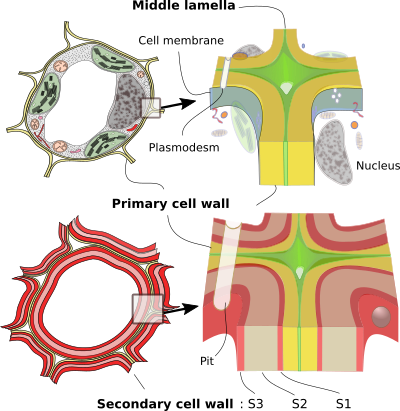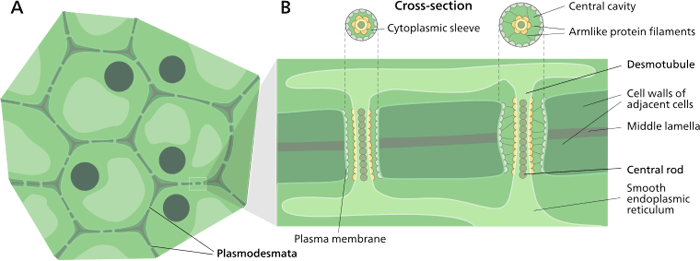Day 1
1. Introduction to Plant Physiology
Plant physiology specifically targets:
- Molecular and cellular processes (metabolism)
- Growth
- Reproduction
- Interactions with the surrounding environment
The study of plants in general has broad applicability and can help us solve big and small everyday problems:
- Starting from the fact that plants are at the base of the food chain (producing ATP and reducing power with photosynthesis and glucose and other macromolecules with their anabolic pathways), we use them for our agriculture. Understanding how to improve plant resistance to pathogens, their nutrient qualities and their resistance to extreme climatic conditions is key in adapting to climate change and keeping feeding the Planet
- Plants can be used also for pharmaceutical purposes, from crafting green vaccines to producing cost-effective and scalable drugs such as anti-tumorals.
- Single-species cultures, fertilizers, pesticides and crop-based emissions are a leading cause of habitat loss, environmental changes and global warming. Plant sciences are intended to optimize workflows and pathways to help reconstructing biodiversity, reducing the environmental impact of agriculture and slow down emissions.
2. The Plant Cell
2a. External structures

There is a core difference between animal and plants cells: the latter ones have a "rigid", well-defined geometric form, determined by the presence of a cell wall.
The cell wall is mainly constituted by polysaccharides, like cellulose, pectin, lignin, hemicellulose... But also by soluble proteins
It is made up by three layers: - The lamella mediana: the first that get deposited, is placed between two plant cells - The primary wall (thin) - The secondary wall (thick and resistant, but not always deposited: it can be made up by very complex molecules like lignin and cork)

The cell wall is often crossed by small tubular structures known as plasmodesmata (sing: plasmodesma):
- They are made up by a central structure of 40-50 nm of diameter, the desmotubule, which is constituted by globular proteins. The desmotubule is in continuity with the endoplasmic reticulum (ER) and connects the cytoplasms of two adjacent cells.
- The desmotubule is linked to the cell wall with anchoring proteins, and is surrounded by a cytosolic sleeve, organised by globular proteins in helicoidal patterns, that contribute to constituting the 8-10 spiraling channels in which the sleeve is divided.
The desmotubule contributes to the symplastic transportation, which connects most of the cells in the leaf mesophyllum. There is also another kind of transportation, which is the apoplastic one, which connects cells via the apoplast, a intermediate space between the plasmatic membrane and the cell wall.
Symplastic transport is key for the communication and the growth of the plant systems, but it comes with a limitations: only molecules under the Size Exclusion Limit (SEL), a dimensional and weight filter that keeps harmful molecules or pathogens from sliding from cell to cell. SEL was studied by using color tracers with different dimensions.
Some pathogens have adapted their systems to bio-hack the symplastic transport by modifying the SEL, using movements proteins that are able to enlarge the plasmodesmata and let the nuclear material from the pathogens pass (they generally are viruses, such as the Tobacco Mosaic Virus).
Plants generally use callose (a poly-saccharide similar to cellulose) to close the enlarged plasmodesmata when they sense a pathogenic invasion: callose synthase is the enzyme that takes care of producing the saccharide, while $\beta$ -1,3-glucanase is the enzyme that degrades it.
2b. Cytoskeleton

Cytoskeleton is a key component to ensure a dynamic rigidity in the cell, it is made up by:
- Microtubules: constituted by 13 hetero-dimeric chains of $\alpha$ and $\beta$ tubuline
- Intermediate filaments: helicoidal filaments constituted by various proteins
- Nanotubules: smaller filaments constituted by actin, revolving in an helicoidal fashion (a pseudo-double helix, or coiled-coil)
Filaments are polymerized following this workflow:
- Nucleation/organizing centers (for tubuline are generally $\gamma$-tubuline) around which the first pieces of the filaments are assembled
- With a positive feedback-like chain of reactions, the polymerization phase takes place and shapes up the tubule
- The tubule reaches a dynamic equilibrium status (stationary phase) where the velocity of the depolymerization is the same of the one of polymerization.
Microtubules and nanotubules are assembled in a dynamic equilibrium setting where monomers are added to one end of the filament (polymerization end) and they are subtracted at the other end (depolymerization end). When the velocity of polymerization is higher than that of depolymerization, the concentration of monomers (tubuline, actin...) decreases and the filaments get enlongated, while when depolymerization dominates the concentration of monomers increases. This delicate equilibrium is crucial in numerous processes, from movement to shaping the cell.